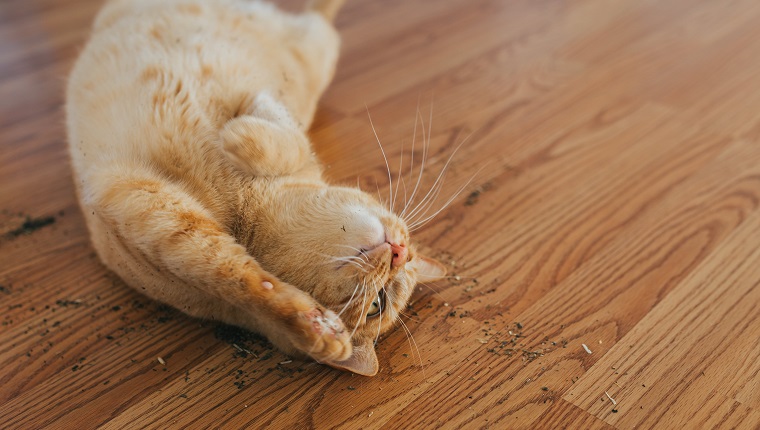If you’ve ever seen your furry friend playing with it, you already know that catnip isn’t just a clever name. The plant’s effects on cats have been known for centuries, evidenced by its scientific name, Nepeta cataria — the Latin “catari” means “of a cat.”
But there’s plenty to this feel-good herb that you might not know. If you have questions about cats and catnip, you’ve come to the right place.
Here are a few facts to help you learn more about what might just be your kitty’s favorite plant.
What The Heck Is My Cat Doing?

Catnip and its plant relatives contain a chemical called nepetalactone that binds to the olfactory receptors of cats to produce its effects. Basically, cats smell or eat it and are put under its spell.
The effects of catnip differ almost on a cat-by-cat basis. Some might drool and get sleepy, some might purr and roll around a lot, some might get hyper and meow like crazy, and some have even been known to become aggressive and hiss — though that’s fairly rare.
Theories abound as to what exactly your kitty is experiencing; some scientists have posited that it’s a feline aphrodisiac, while others think it creates a high similar to the effects of marijuana in humans.
The only agreement on the topic seems to be that about two-thirds of cats are susceptible to its effects. Kittens often don’t respond to it at all, but might change their tune after about six months. Some say you might even find a tiger or lion partaking as well!
If your cat is one of the many who don’t react to catnip, you might be excited to know that there are some alternative plants that produce similar effects in felines. Give the plants on this list a try.
Is Catnip Dangerous?

Nope, catnip is not dangerous — at least not in reasonable doses. It might make your kitty vomit if they eat a lot of it, but in general, cats know when to say “when” and will refuse it once they’ve had enough.
It’s possible that your cat can develop an immunity of sorts, so periodic use — like as a treat — might be advised to avoid overexposure and keep your cat happy.
The plant even has a history of medicinal use for humans thanks to its soothing properties. It’s most commonly brewed in teas as a treatment for headaches and upset stomach.
Nepetalactone also works as a mosquito and fly repellent and might even drive off cockroaches. Rats and mice also tend to avoid catnip, so maybe your cat is doing you a favor by leaving their catnip-infused toys everywhere.
Can I Grow My Own Catnip?

Sure, you can absolutely grow your own catnip! It’s best to plant seeds and make starters indoors in late fall or early spring, though sometimes you can find small starter plants at your local nursery.
They like well-drained, sandy soil, and prefer full sun, but still grow in the shade. Space plants about 15 to 18 inches apart, and keep them watered. Soon, you’ll find a three- to four-foot tall plant with small, lavender flowers.
You can harvest the leaves all through summer. Cats will probably eat it right out in the yard unless you keep them away from it.
Store catnip in an air-tight container in your refrigerator or freezer. Dry the leaves, then pop them in a refillable catnip toy.
Does your cat have a reaction to catnip? Do they enjoy playing with catnip toys? Let us know in the comments below!









